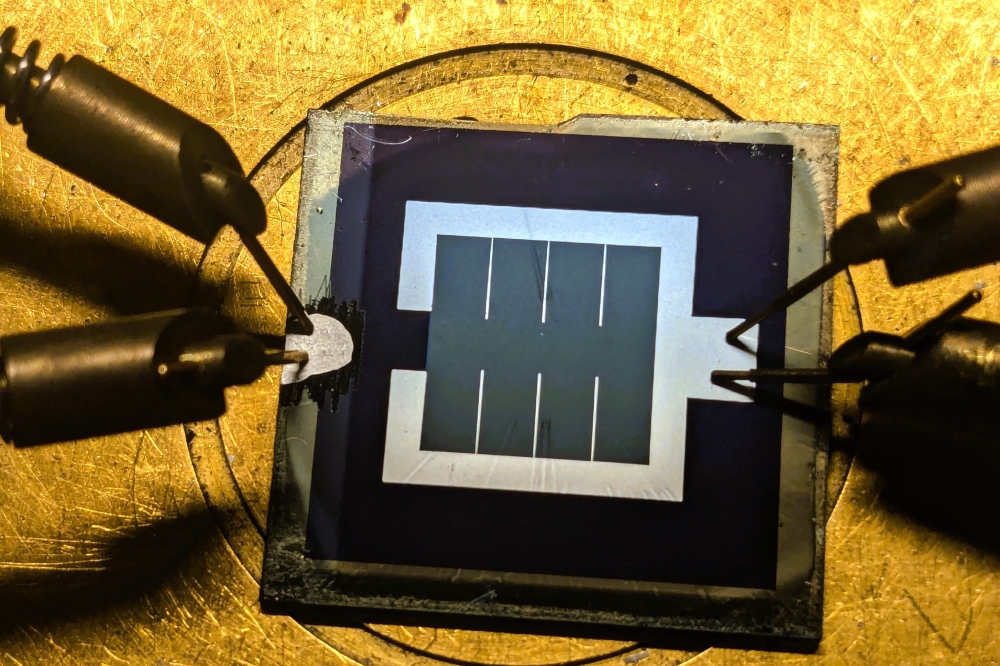POET Technologies: from lab to fab

Can POET Technologies deliver commercial optoelectronic IC production? Compound Semiconductor talks to CEO, Suresh Venkatesan, to find out.
To say the last few months have been action-packed for GaAs-based optoelectronic IC pioneer, POET Technologies, would be an understatement.
First, semiconductor industry trailblazers from Global Foundries and Applied Materials were hired. Second, the company hitched up with Anadigics to transfer its laboratory-proven VCSEL manufacturing to a commercial six inch process.
And now, investor relations advisor, Robert Ferri Partners, an organisation renowned for coaching up and coming tech-related businesses, has been brought in.
As Suresh Venkatesan, ex-Global Foundries senior vice president of technology development and now POET chief executive tells Compound Semiconductor: "To be taken seriously, the technology has to be transfered out of the lab and into something that can be manufactured on a wholesale basis."
"We're in the process of accelerating this transition today and will have detectors and VCSELs built using our proprietary process and Anadigics' commercial manufacturing process by the first quarter of 2016," he asserts.
Talent grab
Venkatesan jumped aboard POET Technologies in June this year, joining former Global Foundries chief executive, Ajit Manocha, and ex-vice president of emerging technologies and products at Applied Materials, Subhash Deshmukh. Manocha is now co-executive vice chairman at the company while Deshmukh is chief operating officer.
The sudden swell of talent at POET has not gone unnoticed by industry pundits. One investor at US stock market analysis firm, Seeking Alpha, wrote at the time: "Professionals of this caliber simply do not leave leadership roles at multi-billion corporations for a tiny tech firm on a whim".
And as Venkatesan highlights, the move is exciting. "I've already taken many technologies from early concept to commercialisation but it's always been under the umbrella of large-scale companies such as Motorola and Global Foundries."
"With POET I get another chance to grow something from its concept phase that also has the potential to be substantially disruptive to the semiconductor industry," he adds.
The crux of POET's technology hinges on a patented materials system, pioneered by the company's chief scientist, Geoffrey Taylor. This supports monolithic fabrication of ICs comprising active and passive optical, and high performance analog and digital electronics, components.
Right now, the company has its sights firmly set on manufacturing a 10 GHz VCSEL-based transceiver by early 2016, with the first step in its 'lab to fab' being to port its three inch fabrication process from the University of Connecticut's facilities to Anadigics' foundry in New Jersey.
The transfer is well underway and Venkatesan is confident that Anadigics is the place to be.
"There are multiple foundries out there, but Anadigics has a state-of-the-art six inch facility," he says. "We're targeting high volume, low cost markets and having the cost advantage of larger wafers is so important. And to be frank, I didn't want to go through multiple wafer transitions."
Also critically for POET, the New Jersey-based foundry has six inch VCSEL processing capabilities.
"There aren't too many companies out there today that have this. Most foundries are still at three or four inch, while many six inch foundries in the Far East don't yet process optical components," points out Venkatesan.
"In terms of long-term high volume manufacturing we're still evaluating who this will be, but it is this mix of six-inch facility and VCSEL capability that has engaged us initially with Anadigics," he adds.
With foundry in tow, POET is also about to pin down its epitaxy wafer supplier. According to the chief executive, the company is currently working with several external epi-vendors with a single source to be announced soon.
"We're still in the process of scaling up here but over the course of this year, as epi-wafers are built and qualified, we will finalise our exact source," he says.
High volume, low cost
POET's first target market is short-range datacommunications. Power-hungry server farms, for example, are already looking for alternatives to the direct attach copper (DAC) cable assemblies for short-reach interconnects.
According to Venkatesan, POET's VCSEL-based transceiver will provide the answer and be ready by 2017.
As he highlights, thanks to its CMOS-based integrated process manufacturing, POET's components will be competitive with DAC.
"The main customer pain point in the DAC market is cost, and we are in parity with copper," he says. "But then the next important consideration is power and here, we can blow the socks off anything you get with DAC."
"We make what's on the wafer ten times more energy efficient, ten times cheaper and more than ten times smaller," he adds.
If successful at large volume manufacture, POET's monolithic opto-electronic process platform will extend the end of Moore's law, and even change the face of monolithic optical integrated circuit fabrication.
But given the company's ambitious and aggressive commercialisation plans, how realistic is this goal?
Clearly cash could be a sticking point. Still at the end of September, the company unveiled a very healthy balance sheet of $20.5 million in cash, expected to carry development for the next eight quarters, well beyond prototype demonstrations.
And Venkatesan is confident that with the process proven on a large-scale, licensees will follow.
"You don't attract good licensees until you demonstrate the value of your technology as a real product," he says. "Our strategy is to now focus on products and tie up licensees in the transceiver space and adjacent market segments."
"Yes, our roadmap is aggressive, but a lot of development has been going on for a fair amount of time," he adds. "We are creating disruption; it's exciting and risky, but no innovation comes without risk."


































